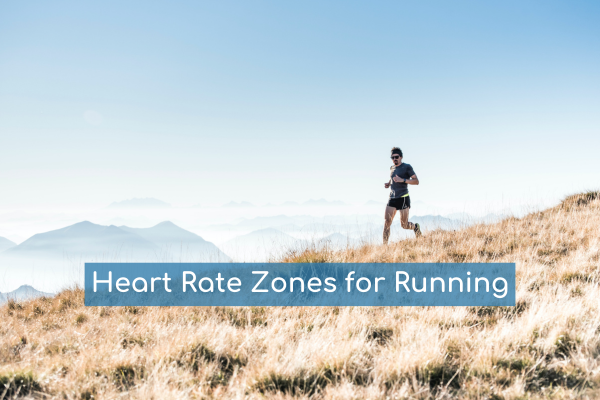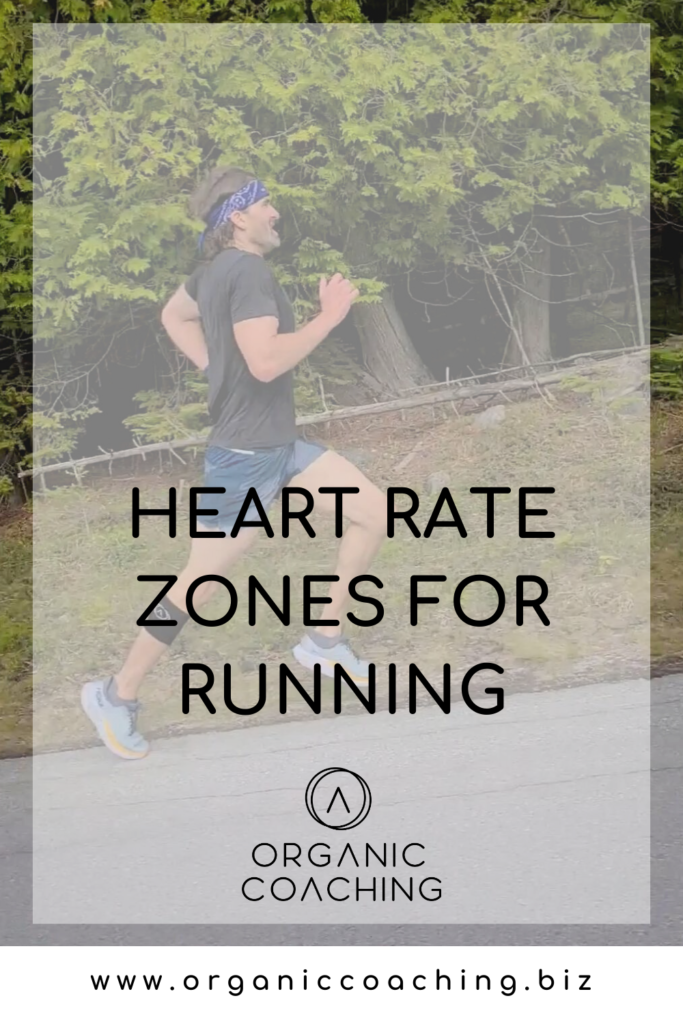

When looking to make your training more specific, training using heart rate zones will ensure your training is specific and tailored to you. When using heart rate zones for running there are 5 zones, ranging from Z1, which is very easy to Z5, all out. Before I explain each zone and its benefits of it, let’s first examine how to set zones.
Setting heart rate zones is done by completing a lactate threshold test. Once warmed up this run test is completed by running 30 minutes all out, being sure to start off conservatively to ensure you are able to maintain a high effort throughout the test. To find your lactate threshold take your average heart rate from the final 20 minutes of the 30 minutes. This average heart rate is your threshold heart rate and can be plugged into TrainingPeaks to set your heart rate zones. At Organic Coaching, we use Joe Friel For Running Zones.
Warm Up: 10 min RPE 3 4 x:20 RPE 8 with 40 RI at RPE 3
Main Set: 30 min all out. The first five minutes should feel difficult but sustainable, the last five should be an “I’m never doing this again” effort.
Cool Down: 10 min at RPE 3. Add in a couple of high knees in the final minutes to drive the knees
| Zone: | Percent Of Threshold HR: | How It Feels: |
| Z1 | 50%-64% | Can speak full sentences with ease. |
| Z2 | 65-84% | Can speak a full sentence. |
| Z3 | 85%-91% | Can speak a couple of words. |
| Z4 | 92%-99% | Can speak a word. |
| Z5 | 100%+ | Can’t speak. |
Starting off we have Z1, zone one training may feel like a waste, but it is far from that! Zone 1 training feels almost effortless, it’s a zone that could easily be maintained for a whole day. You can carry on a whole conversation at this zone.
Spending an extended amount of time in Zone 1 “stretches” the heart and allows it to pump more blood. After this point, it’s only the heart rate that increases.
Zone 1 training benefits:
With zone 2 training being aerobic, the work strengthens the heart and lungs. Zone 2 training is where we build the engine!
As the heart gets stronger, the stroke volume increases and this means that the heart is able to pump more blood (and with more blood exiting the heart comes more oxygen) out to the body every time it beats. This in turn, also increases stroke volume, cardiac output, oxygen transport + delivery, and ultimately VO2 max.
We often see a lower heart rate across all zones with proper zone 2 training as the heart becomes more efficient.
Zone 3 is the zone that many athletes spend too much time in, yet when Z3 training is executed properly, it will elevate your fitness! Z3 is challenging enough that you feel you’re out of your comfort zone, but not challenging enough that you can’t sustain it. It’s often called “comfortably uncomfortable.” At this point, it’s barely possible to complete a sentence, compared to the conversational effort of lower zones.
The problem with spending too much time in Z3 is that it does not provide enough high intensity to largely improve speed/power, but it is not so easy that the body is able to fully recover. So, athletes may feel like they are constantly putting in the work but not necessarily getting faster. If you fall into this trap, you may feel like you are putting in the work and not seeing the gains. I call this “grey zoning.”
Having said this, there are big benefits to Z3 training!
In Zone 3, more muscle fibers are engaged, and the body builds even more mitochondria (powerhouse) in the muscles. The training trains the body to develop a greater capillary network. This helps to transport oxygen to working muscles more efficiently. Zone 3 is a key zone in improving fitness. Just don’t slip into the “grey zone” trap that it can be. Keeping Z3 to intervals is a sure way to see gains from this zone.
Next, we have zone 4 and this is a tricky one. It’s the point that most overtraining happens if not used carefully. Pushing yourself to the limit in Z4 too often or too long (especially without proper rest intervals) puts a lot of stress on the body, killing mitochondria that many athletes have worked so hard to build. From a physiological perspective, the anaerobic threshold is the point where lactic acid starts to build up so fast that the body can not produce enough energy to maintain the intensity for a long.
In Z4, you can only speak a couple of words at a time if that, and the muscles being used start to feel heavy really quickly!
Benefits of Zone 4 Training:
While Z4 may sound like something for only sprinters when in reality, all distance endurance athletes can benefit from Z4 training.
Finlay, we have zone 5, this is where you are at your max effort, all out! This time spent in the zone is seconds compared to zones 1-4. Your heart will be pumping close to capacity, and you will be building up lactic acid so fast that your body will not be able to process it. The burn is real here!
There are benefits of Training in Zone 5 though!
In zone 5, you develop max power, form, and reaction time. So, while it hurts – Z5 intervals are worth it!
Each heart rate zones for running has its purpose and place. When zones have been set through proper testing, such as the threshold run test, and then are applied to a training program the athlete can progress faster while decreasing the chance of setbacks from overtraining!
READ MORE: BREATHING TECHNIQUE WHILE RUNNING


Carly and Tyler Guggemos built Organic Coaching in 2014 with a simple philosophy that works. The idea is to take what you have and grow it to get faster, fitter and stronger. And to do it with the time you have – not the time you wish you had.

For athletes who are ready to take their training to the next level while still thriving and succeeding in their professional and family life.
Copyright © 2024 Organic Coaching LLC